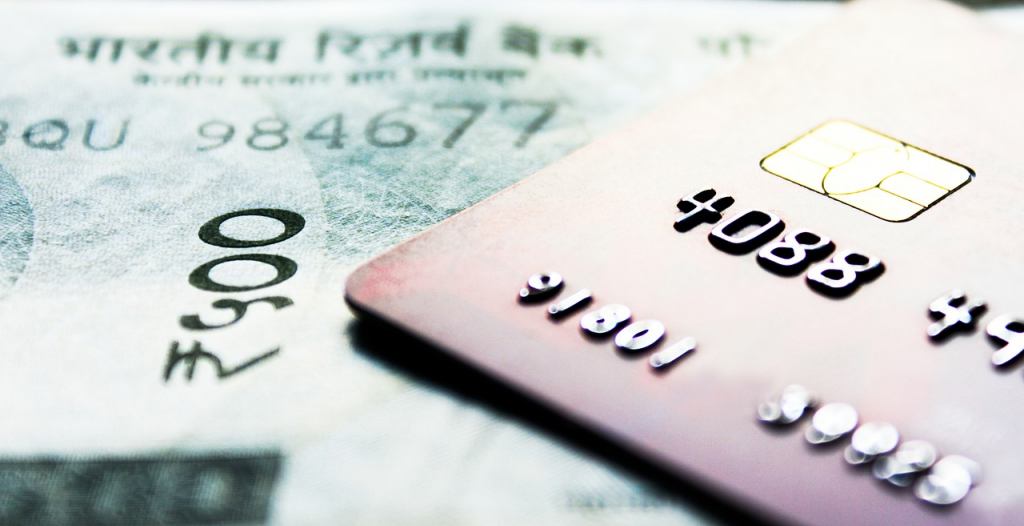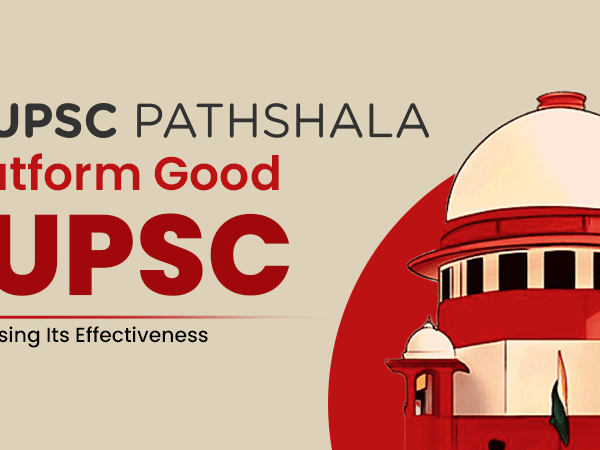In at least one step of the selection process, most government employment tests include a part on general awareness. SBI PO and other banking examinations are no exception. A part of the SBI PO exam is dedicated to general awareness. This part assesses applicants’ knowledge of current events in the United States and abroad, as well as other static general information.
Looking for Banking Awareness for SBI PO interview questions? This article is just the answer to it. Read on to add some essential notes to your bank exam preparation.
Exam Structure
| Test | No. of Questions | Maximum Marks | Time for each test |
| Reasoning & Computer Aptitude | 45 | 60 | 60 min |
| General/Economy/Banking Awareness | 40 | 40 | 35 min |
| English Language | 35 | 40 | 40 min |
| Data Analysis & Interpretation | 35 | 60 | 45 min |
What is Banking Awareness?
Banking Awareness encompasses a wide range of issues, and, needless to say, it is dynamic, in the sense that what was the law of the nation yesterday may be modified today. To comprehend the dynamic aspect of Banking Awareness, we must first grasp the static ideas that drive the subject.
Also Read: Bank PO Exam Syllabus 2021: Things You Should Not Miss about the Bank Exam
Banking Awareness Syllabus
Below is a table to cover the syllabus of banking awareness in all the bank exams.
| History of Banking in India | Indian & International Finance System | Banking terminologies | Important Bank & Finance Acts and bills |
| Banking and Financial Reforms in India | Banking and Financial Committees in India | Currency | Financial Institutions in India |
| Types of Bank Accounts | Financial Market in India | Inflation | Types of Mortgages |
| Types of Loans | Capital & money Market | Money Laundering & Anti-Money Laundering | International Financial Institutions |
| Functions of Banks | Credit & Debit cards | Green Banking | Financial Inclusion |
| Bank Credit Operations | Types of Cheques and other financial instruments | LIBOR & MIBOR | Basics of Bond and their Types & Features |
| Foreign Banks in India | SWIFT Codes for banks | Reverse Mortgage Loan | Mutual Funds |
| Fund Transfer Services | Types of Foreign Accounts | CIBIL | Bombay Stock Exchange (BSE) |
| Structure of Banking Industry | Bharatiya Reserve Bank Note Mudran Private Limited | Cash Management Services | National Stock Exchange (NSE) |
| Nationalised Banks | Indian Financial System | Banking Ombudsman | Bancassurance |
Facts to Know About Banking Awareness
Here are a bunch of facts that can be a good addition to your notes.
Banking Awareness for SBI PO Interview Facts Part 1
# Automated Teller Machine (ATM) is a machine that can perform a range of financial transactions and is initiated by a magnetically encoded card.
# Bank Ombudsman is a person who listens to consumer complaints about banks.
# The RBI appoints the Bank Ombudsman.
# The RBI was nationalised on January 1, 1949.
# Washington, D.C. is home to the World Bank’s headquarters.
# Bank of Hindustan was the first bank to be formed in India.
# The Imperial Bank of India was renamed the State Bank of India on April 30, 1955.
# The headquarters of SBI are in Mumbai.
# Banc assurance refers to insurance services given by multiple banks.
Banking Awareness for SBI PO Interview Facts Part 2
# Bank The rate at which the RBI acquires or rediscounts commercial banks’ bills of exchange.
# The Reserve Bank of India (RBI) is in charge of central banking in India.
# The Bureau of Financial Supervision is abbreviated as BFS.
# The late Prime Minister of India established the National Bank of Agricultural Research and Rural Development (NABARD) to serve the nation.
# The Reserve Bank of India’s Central Office is currently in Mumbai.
# Credit card purchases are often paid for within 30 days after purchase.
# Base Rate is the lowest interest rate charged by a bank to its most creditworthy customers.
# CRR is an abbreviation for Cash Reserve Ratio.
# SBI is now India’s largest public-sector commercial bank.
# Crossing of Cheque is the process of drawing two lines across the front of a cheque.
# In The Pass Book, a copy of all debit and credit inputs in a customer’s account is kept.
Also Read: Bank PO Exam Eligibility Criteria: SBI/ IBPS Bank Exam Details for 2021
Banking Awareness for SBI PO Interview Facts Part 3
# Magnetic Ink Character Recognition (MCIR) is an abbreviation for Magnetic Ink Character Recognition.
# Repo Rate is the interest rate at which the RBI purchases government assets from banks.
# Bearer Cheque is a cheque that is payable to anybody who submits it for payment at a bank.
# The EXIM Bank of India was founded in 1982.
# Banks are required to hold a specific amount of cash on hand to asset value known as the Statutory Liquid Ratio. State Co-operative Bank – provides long-term loans to agriculture.
# CORE is an acronym that stands for Centralized Online Real-Time Exchange Blood relation only can be a beneficiary for a bank savings account.
# To regulate Liquidity in the economy, the RBI conducts certain Open Market Operation Transactions.
# KYC stands for “Know Your Customer.”
Banking Awareness for SBI PO Interview Facts Part 4
# Pallavan Grama Bank was the first rural bank to launch a co-branded ATM card.
# Letter of Credit is a document given by an importer’s bank to a branch or agency in another country ensuring that a seller will get the full payment if specified delivery criteria are satisfied.
# The step performed by a bank to prohibit transactions from being made from an account is known as a frozen account.
# A current account is a bank account where a depositor can deposit and withdraw money at any time.
# EFT is an acronym that stands for Electronic Fund Transfer. Call Money is a term that refers to lending money for a single day.
# The Governor of the Reserve Bank of India announces India’s monetary policy.
# The RBI’s open market activity refers to the purchasing and selling of – Government Bonds.
Banking Awareness for SBI PO Interview Facts Part 5
# ARDC is an abbreviation for Agricultural Research and Development Center.
# Dishonour of Cheque is Non-payment of a cheque by the paying banker, with a return message explaining why.
# The Reserve Bank of India (RBI) is in charge of India’s foreign exchange reserves.
# In banking language, bank loans are commonly referred to as NPAs (Non-Performing Assets).
# Reverse repo rate is the rate at which a country’s central bank borrows money from commercial banks inside the country.
# Commercial banks determine interest rates.
# The RBI issuing money is known as Legal Tender Money Laundering refers to Money obtained in an unlawful manner
# Microcredit is a loan given to the poor to assist them in becoming self-employed. Plastic money includes ATM cards, credit cards, debit cards, and international cards.
Banking Awareness Questions for SBI PO Interview
Brief Me about Yourself
It is the first basic question that every interviewer questions a candidate in order to begin the conversation and learn about the individual. So, just be positive and introduce yourself, beginning with your name, credentials, and any other pertinent information that an interviewer should be aware of. Just finish it in 2 minutes so that it doesn’t turn into a dull chat.
Why do You Want to Work in the Banking Industry?
Be rational in your response to this question, explaining why banking sectors have affected individuals using all the facts and data available, as well as why the banking sector is the fastest-growing industry. Do not begin by stating that you desire a steady career or any personal viewpoint. Simply make it well-versed so that others can develop an accurate judgement of your answer.
What Papers Must a Person Provide in Order to Create a Bank Account?
According to the RBI, banks must follow the Know Your Customer (KYC) rules while obtaining personal information from account holders. The essential documents required to open an account are photos, evidence of identification (such as an Aadhar card or Pan Card), and address proof.
Also Read: Canara Bank PO Eligibility Criteria 2021: Here’re the Exam Pattern, Registration, Salary & More
What is the Annual Percentage Rate (APR)?
APR stands for annual percentage rate. It is a fee or interest charged by a bank to its clients for utilising its services such as loans and credit cards. The interest is computed on a yearly basis.
What is the Difference Between Amortisation and Negative Amortisation?
Amortization relates to the repayment of the loan through instalments to cover the principal amount plus interest, however negative amortisation occurs when the repayment of the loan is less than the loan’s accrued interest.
What is The Debt to Income Ratio?
A loan individual’s debt to income ratio is computed by dividing his total debt payment by his annual revenue.
What Exactly is Loan Grading?
Loan grading is the categorization of a loan based on different risks and characteristics such as repayment risk, the payment history of the borrower, and so on. Based on the loan’s sustainability and risk, the system assigns it to one of six categories.
What Exactly Do You Mean by “Co-Maker”?
A co-maker or signer is someone who signs a note to ensure the repayment of a loan on part of the principal loan applicant.
What is a Credit Line?
A line of credit is an arrangement between a bank and a borrower to offer a specified amount of loans on demand by the borrower. The borrower can withdraw the funds at any time and simply pay interest on the amount withdrawn.
What is a Payroll Card?
Payroll cards are smart cards that banks offer to simplify salary payments between employers and workers. The company can load salaries onto an employee’s smart card using payroll card, and the worker can withdraw the income even if he or she does not have a bank account.
What is a Commercial Bank?
A commercial bank is run by a group of people or a Federal Reserve System member. Individuals are served by commercial banks, which are primarily concerned with accepting deposits and lending to businesses. Such a bank makes money by charging the borrower interest on the loan. The customer’s money will be utilised by the bank to make business loans, vehicle loans, mortgages, and home improvement loans.
What is Overdraft Protection?
Overdraft protection is a service offered by banks to their customers. For example, suppose you had two accounts at the same bank, one for savings and one for credit. If one of your banks does not have enough funds to cover the transactions or process the checks. The bank will transfer funds from one account to another that does not have cash in order to avoid check returns or to pay your shopping or utility obligations.
What Do You Mean by ‘Foreign Draft’?
A foreign draught is an alternative to foreign currency that is commonly used to transmit money to another country. It may be acquired from commercial banks, who will charge according to their bank’s laws and regulations. People prefer to send money via ‘foreign draught’ since it is both cheaper and safer. It also allows the recipient to access the payments more quickly than a check or cash transfer.
Conclusion
We hope that you liked the article and noted all the important parts. You can bookmark this page on your phone or PC to get the questions in just a click. You can also check out our other articles on banking awareness which will help you to get better for your next exam.
Along with that, you can also try out UPSC Pathshala’s single courses to experience a new way of learning.
Also Read: Bank PO Salary in India: Important Details Including Exam Pattern, Salary, Perks & More






All sorts of Bank interview questions are covered in this article. It is amazing. How are you guys preparing for it?
The exam structure and questions given here are extremely helpful.
This article is utmost beneficial as it gas given all the information of the questions asked in the exam. Do you have any query?